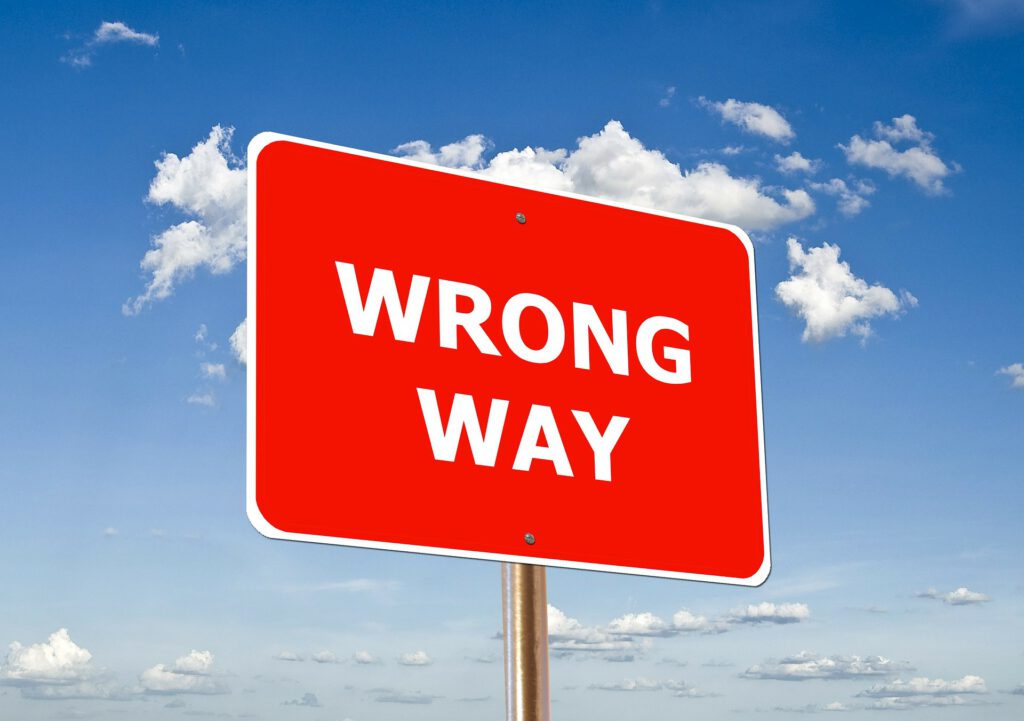Focussing on What You Should and Shouldn’t Do: Big Equality, Diversity and Inclusion Mistake No 2

Focussing on what you should and shouldn’t do – how can that be an Equality, Diversity & Inclusion mistake? After all, isn’t this what your Equality & Diversity training is all about? Isn’t your main concern to ensure that you work within the rules and are mindful of what you should and shouldn’t do?
Hmmm – well, not exactly.
Avoid these 5 Big Equality, Diversity and Inclusion Mistakes in 2019:
Mistake Number 1 – Thinking a Robust EDI Policy is Enough
Mistake Number 2 – Focussing on What You Should and Shouldn’t Do
Mistake Number 3 – Limiting Good Practice to the 9 Protected Characteristics
I’m going to describe them to you over the next few issues of FE News so that you can avoid those mistakes in your own organisation.
Mistake Number 2 – Focussing on What You Should and Shouldn’t Do
Let’s start by going back to those Equality, Diversity & Inclusion policy documents that we looked at in Mistake Number 1 – Thinking a Robust EDI Policy is Enough. If you take a quick glance through most policy templates, you might find that they’re a little scary in places.
Scary? Surely not. After all, Equality, Diversity & Inclusion for training providers is all about inclusivity, putting an end to bullying, stopping discrimination and all that good stuff. How can a document with such worthy aims be scary?
The answer lies in all those terrifying phrases that policy documents contain; the ones that ring with the language of lawyers and courtrooms. There are phrases that conjure up visions of legal complexities, and the punishments awaiting anyone who doesn’t comply. Phrases such as ‘can be held liable’ or ‘gross misconduct’, ‘Protection from Harassment Act 1997’ and of course ‘Equality Act 2010’.
Legal frameworks and obligations are very important, but all too often I’ve seen people responsible for Equality & Diversity good practice side-lined into focussing on Dos and Don’ts, Shoulds and Shouldn’ts.
Equality, Diversity & Inclusion practice of this type is built around two questions:
- What should we do to make sure that we stay on the right side of the law?
- And what shouldn’t we do, to make sure we don’t end up in trouble?
On the surface, this may sound as if it makes sense, helping you to identify good and bad practice. However, putting too much focus on Dos and Don’ts has a lot to answer for when it comes to Equality, Diversity & Inclusion mistakes.
On the one hand, it’s very important for you to be clear about the fact that EDI is a serious issue and that discrimination, harassment, bullying and victimisation are not acceptable in your organisation. That includes reminding your teams and learners about the legislation that backs up good practice.
On the other hand, the trouble with this approach is that it can reduce Equality, Diversity & Inclusion training to a list of what’s allowed and what isn’t. Admittedly, there are practices which should be followed and behaviour which is not acceptable, but the problem arises when this becomes the primary emphasis and approach to an organisation’s everyday Equality & Diversity practice.
Why is this approach a problem?
It’s because when people are overtly worried about the consequences of doing something wrong (even unintentionally), it can lead to poor decision making, including:
- Unnecessary action and rules that create resentment and maybe even marginalise people, creating discrimination where there was none previously.
- A practice of ‘leaving well alone’ in order to avoid making a mistake.
- Closing down of open, honest discussion and questioning, for fear of where the conversation might lead.
There are many organisations and businesses where people feel nervous about what’s on ‘the list’ of Dos and Don’ts for Equality, Diversity & Inclusion. They wonder – are we allowed to do this? Can we do that?
This can create a lot of confusion, non-action and worst of all: a culture where people bottle things up, don’t raise issues, or ask questions. Until things blow up out of hand, that is.
EDI practice that focusses on Dos and Don’ts, Shoulds and Shouldn’ts and the hazards of Getting Things Wrong can be the very thing that leads to an Equality & Diversity upset.
This approach can create situations where some people feel alienated, excluded and marginalised. It can also fuel a mistrust for Equality, Diversity & Inclusion and make some people suspicious and dismissive of it.
The very people that Equality & Diversity training most needs to reach, in order to create behavioural and cultural change, may see this list of Dos and Don’ts as not much more than rather annoying red tape.
They ‘tick the necessary boxes’ then roll their eyes and ignore the possibilities of real, quantifiable benefits that come with genuine day-to-day good practice.
‘Okay – I get it about Dos and Don’ts. But how do I do things differently?’
Like so much of good practice for Equality & Diversity, it comes down to good communication – think ‘open discussion’, rather than ‘top down directives’. When training providers limit Equality, Diversity & Inclusion to Dos and Don’ts they can create a climate in which staff and learners are nervous of asking questions or flagging issues, for fear of being shown to be ignorant of ‘correct’ practices. Or because they worry that just mentioning certain issues or concerns might be ‘wrong’.
Here’s what you can do to change that culture:
- Rather than focussing on the list of dos and don’ts, think about how to open up two-way communication channels between everyone in your organisation. That means apprentices, other learners, employer partners, managers, team leaders and all staff.
- Aim to foster the open, understanding, tolerant and clear communication that is essential to all good Equality, Diversity & Inclusion practice. It’s probably the most important component of any successful Equality, Diversity & Inclusion culture. Make it clear that everyone’s input is important, and that there’s always an opportunity to sit down and explore concerns, questions or ideas.
When we read about the Equality & Diversity disputes that get employers into tribunals, losing them contracts and tarnishing reputations, we very often find that at the root of the problem there’s a communication issue.
We’ll often see that clear and open communication at the outset would have built understanding between the parties now in dispute. If only they’d done it earlier! Open and ongoing communication would have provided a simple route to a compromise, had it been there from the start.
Learn how to communicate effectively, openly and honestly. And listen with an open mind, unhindered by Shoulds and Shouldn’ts.
Johnny Johnson works with training providers, delivering Equality, Diversity, Inclusion and Safeguarding training that’s straightforward and effective.











Responses